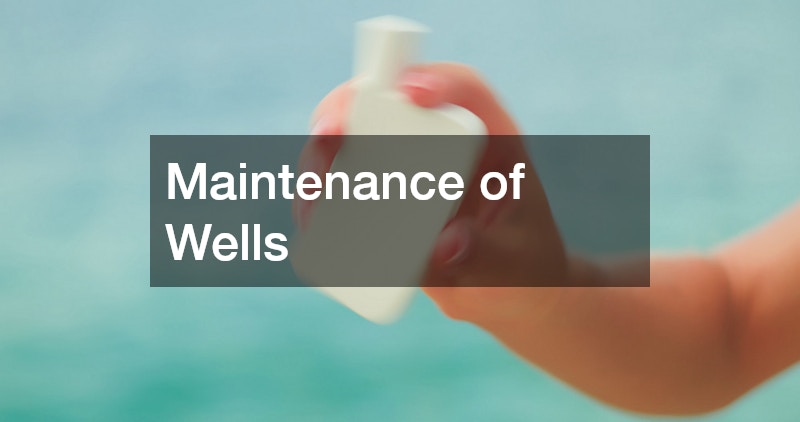Well drilling is a crucial process for accessing underground water resources, especially in rural and remote areas. Whether for residential, agricultural, or industrial use, having a properly drilled well ensures a reliable and clean water supply. This article covers everything you need to know about well drilling, including the key steps, types of wells, equipment used, and environmental considerations, with a focus on local well drilling practices.
What Is Well Drilling?
Well drilling is the process of creating a borehole deep into the ground to reach aquifers—layers of water-bearing rock or sediment—where groundwater is stored. This allows for the extraction of water that can be used for drinking, irrigation, livestock, or industrial processes.
Unlike surface water, groundwater is generally less susceptible to contamination, making wells a vital water source in many communities.
Types of Wells
There are several types of wells based on how they are constructed and the purpose they serve:
-
Dug Wells: These are shallow wells dug by hand or machinery. They are wide and typically lined with stones, bricks, or concrete to prevent collapse. Dug wells are more vulnerable to contamination due to their shallow depth.
-
Drilled Wells: These wells are created by advanced drilling machinery that penetrates deep into the earth. They are narrow and can reach deep aquifers, providing access to cleaner, safer water.
-
Driven Wells: Constructed by driving a small diameter pipe into shallow groundwater, driven wells are common where the water table is high.
Drilled wells are the most common type in many regions due to their depth and durability, which help ensure a steady, clean water supply.
The Well Drilling Process
Local well drilling involves several critical steps to ensure a successful and safe water source:
-
Site Evaluation: Before drilling, an assessment is made of the land to identify the best location for the well. This involves studying geological maps, water table depth, and potential sources of contamination.
-
Permitting: Depending on local regulations, obtaining permits may be required to ensure the drilling complies with environmental and safety standards.
-
Drilling: Using specialized equipment such as rotary drill rigs, the borehole is drilled down to the desired depth. The process involves cutting through soil, rock, and other layers until reaching an aquifer.
-
Casing Installation: Once the borehole is drilled, a casing pipe is inserted to prevent the walls of the hole from collapsing and to protect the water from surface contaminants. The casing is usually made of steel or PVC.
-
Well Screen Placement: At the bottom of the casing, a well screen is installed. This allows water to enter the well while filtering out sand, gravel, and other particles.
-
Grouting: The space between the borehole wall and casing is sealed with grout to further protect the well from contamination.
-
Pump Installation: After drilling is complete and water quality tested, a pump is installed to draw water to the surface for use.
Equipment Used in Well Drilling
The equipment required for well drilling varies depending on the type of well and the geological conditions. Key pieces include:
-
Drill Rig: The main machine used to bore into the ground. Modern rigs can be truck-mounted or portable.
-
Drill Bits: Various bits are used to penetrate different types of soil and rock, including roller-cone bits and diamond bits.
-
Mud Pumps and Drilling Fluids: These help lubricate the drill bit and bring cuttings to the surface.
-
Casing and Screens: Protect the well structure and filter water entering the well.
-
Pumps: Submersible or jet pumps are commonly used to extract water.
Water Quality and Testing
Once the well is drilled, water quality testing is essential to ensure it is safe for its intended use. Common tests include checks for bacteria, nitrates, pH levels, and the presence of harmful chemicals or heavy metals. Periodic testing after installation helps maintain water safety and detect potential contamination early.
Environmental and Safety Considerations
Local well drilling must take environmental impacts into account to avoid damaging the surrounding ecosystem or contaminating groundwater supplies. Proper well placement helps prevent pollution from septic tanks, agricultural runoff, or industrial activities.
Safety during drilling operations is also critical. Operators must follow strict guidelines to prevent accidents, including handling heavy machinery safely, managing drilling fluids responsibly, and properly sealing abandoned wells to avoid hazards.
Benefits of Local Well Drilling
Choosing local well drilling services offers several advantages:
-
Knowledge of Local Geology: Local drillers understand the regional geology and water tables, increasing the chances of drilling a successful well.
-
Compliance with Local Regulations: Local companies are familiar with the permitting process and environmental requirements in the area.
-
Quick Response and Support: Being nearby allows for faster service, maintenance, and troubleshooting when needed.
Maintenance of Wells
After installation, maintaining a well is vital to ensure longevity and water quality. Maintenance steps include:
-
Regular inspection of the pump and wellhead.
-
Testing water quality annually or as recommended.
-
Keeping the area around the well clean and free from contaminants.
-
Promptly addressing any changes in water taste, odor, or clarity.
Well drilling is a technical yet essential process that provides access to clean groundwater, supporting homes, farms, and industries. By understanding the basic steps involved—from site selection to pump installation—and the importance of working with experienced local well drilling professionals, individuals can secure a dependable water source for years to come. Proper maintenance and environmental precautions ensure the well remains safe and functional, protecting both health and natural resources. If you are considering drilling a well, consulting with local experts will help guide you through the process tailored to your specific location and needs.




